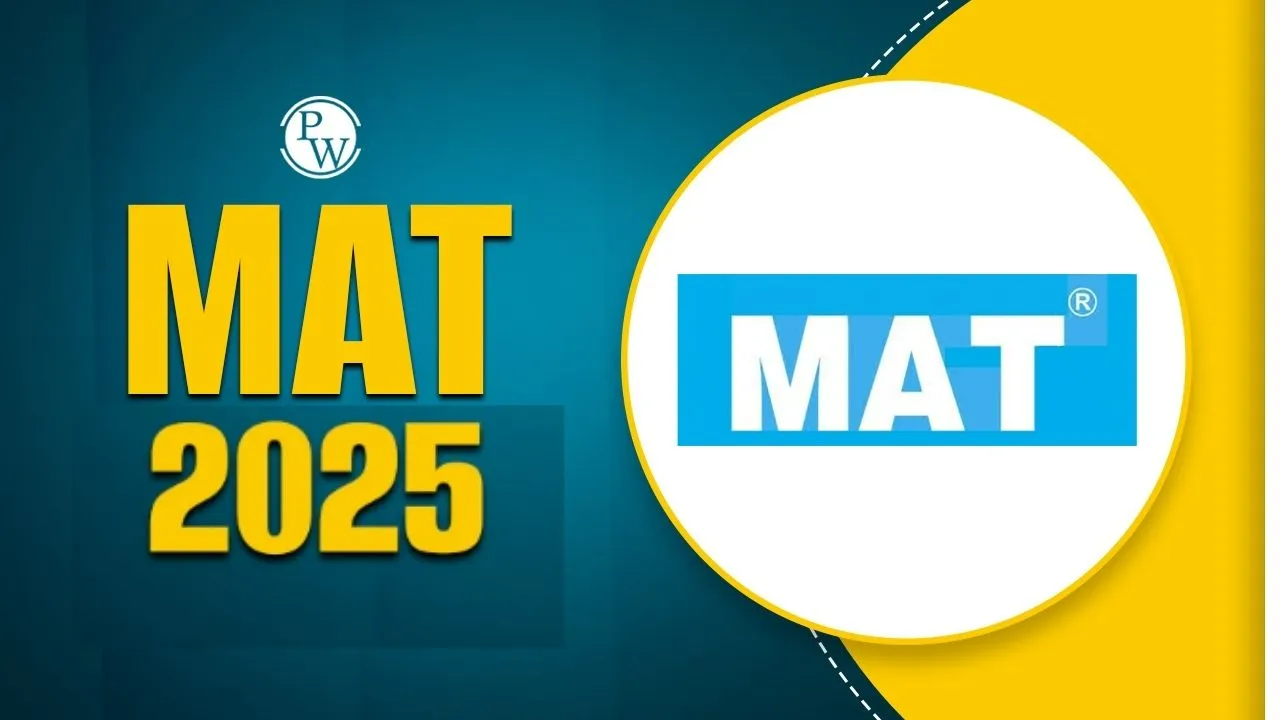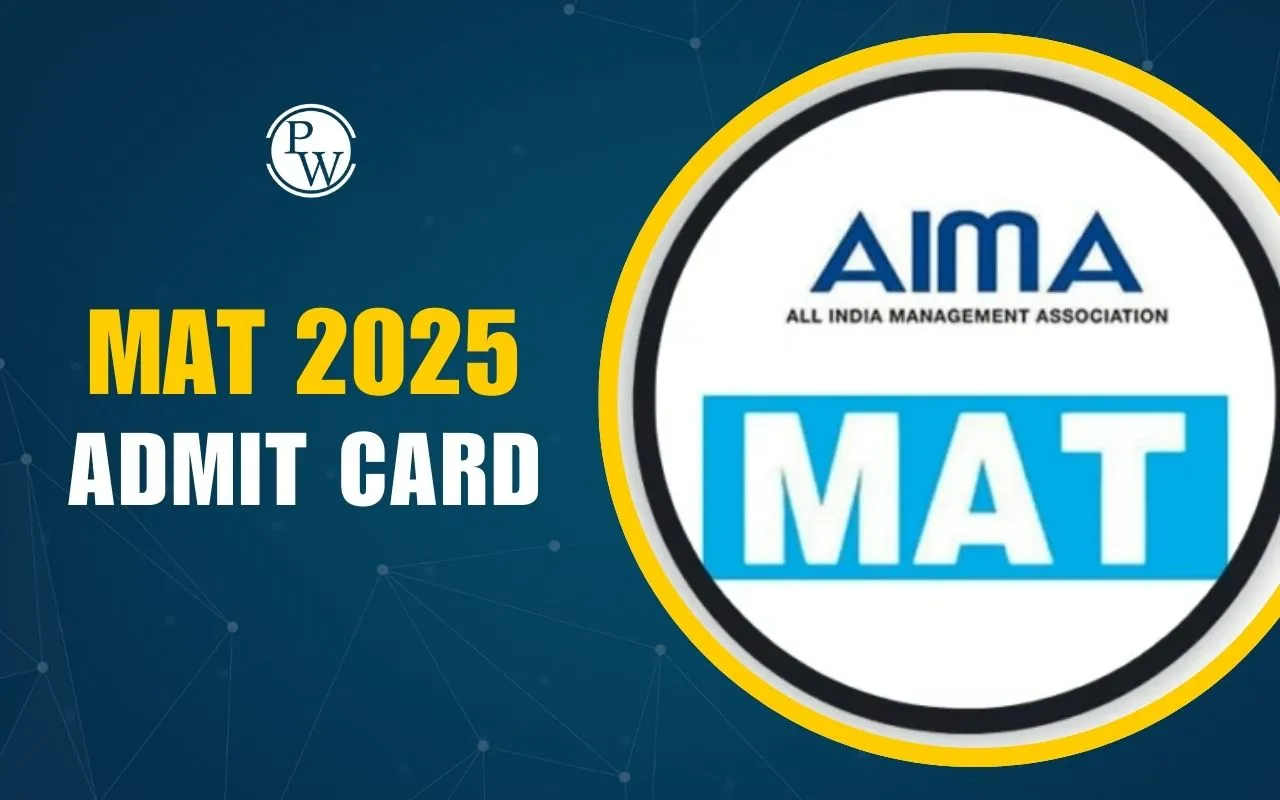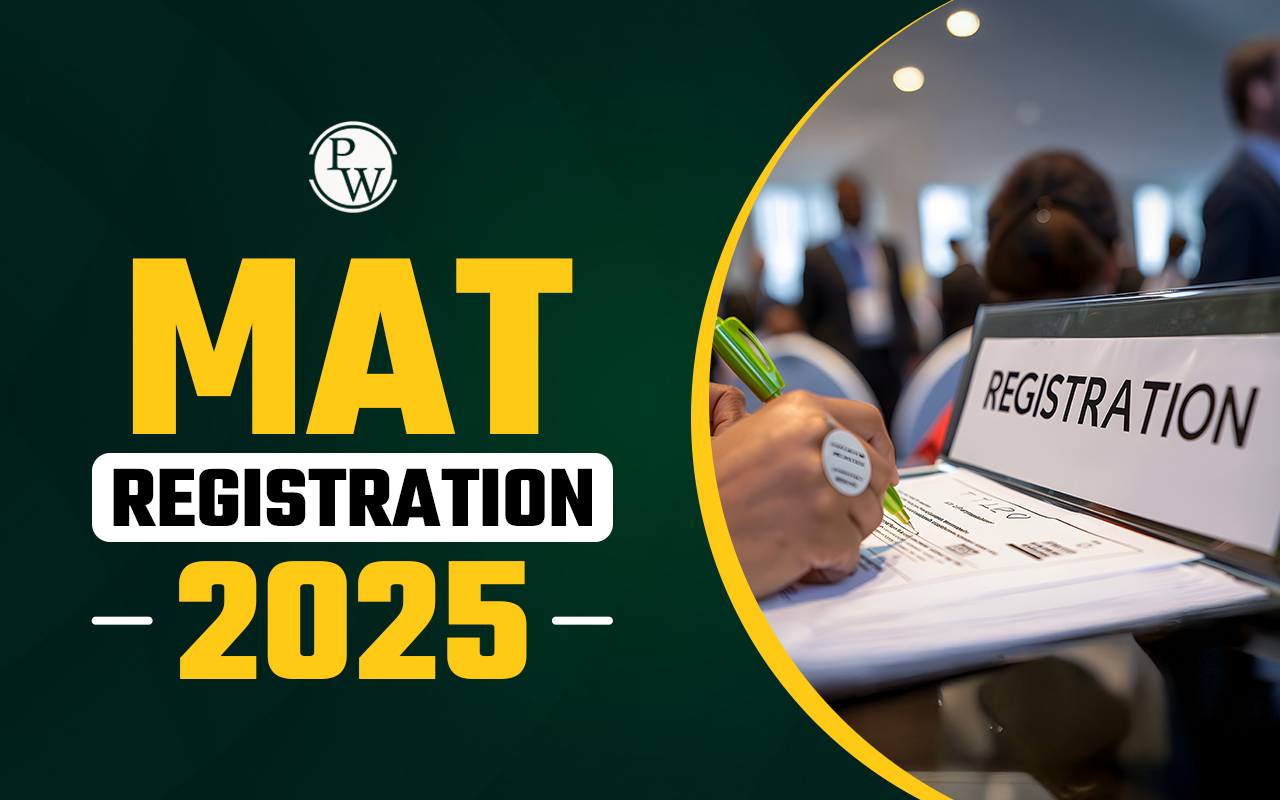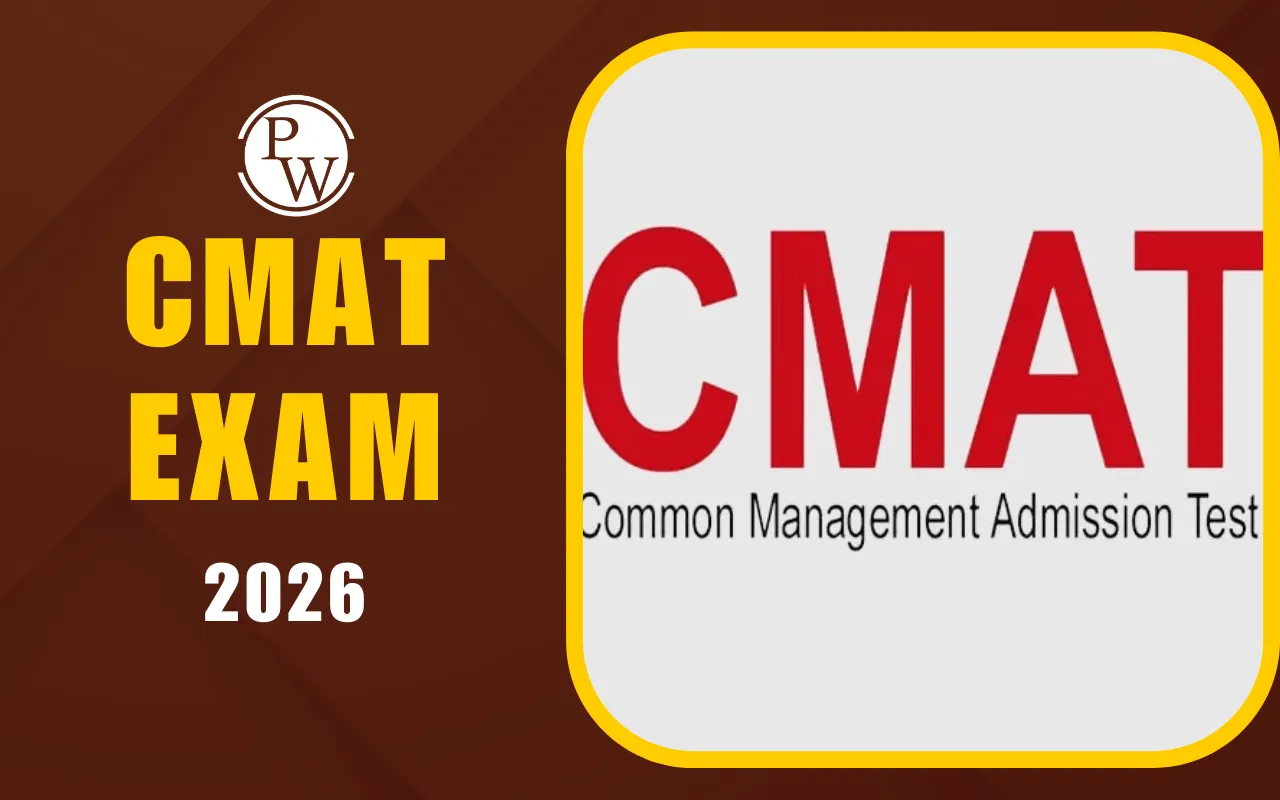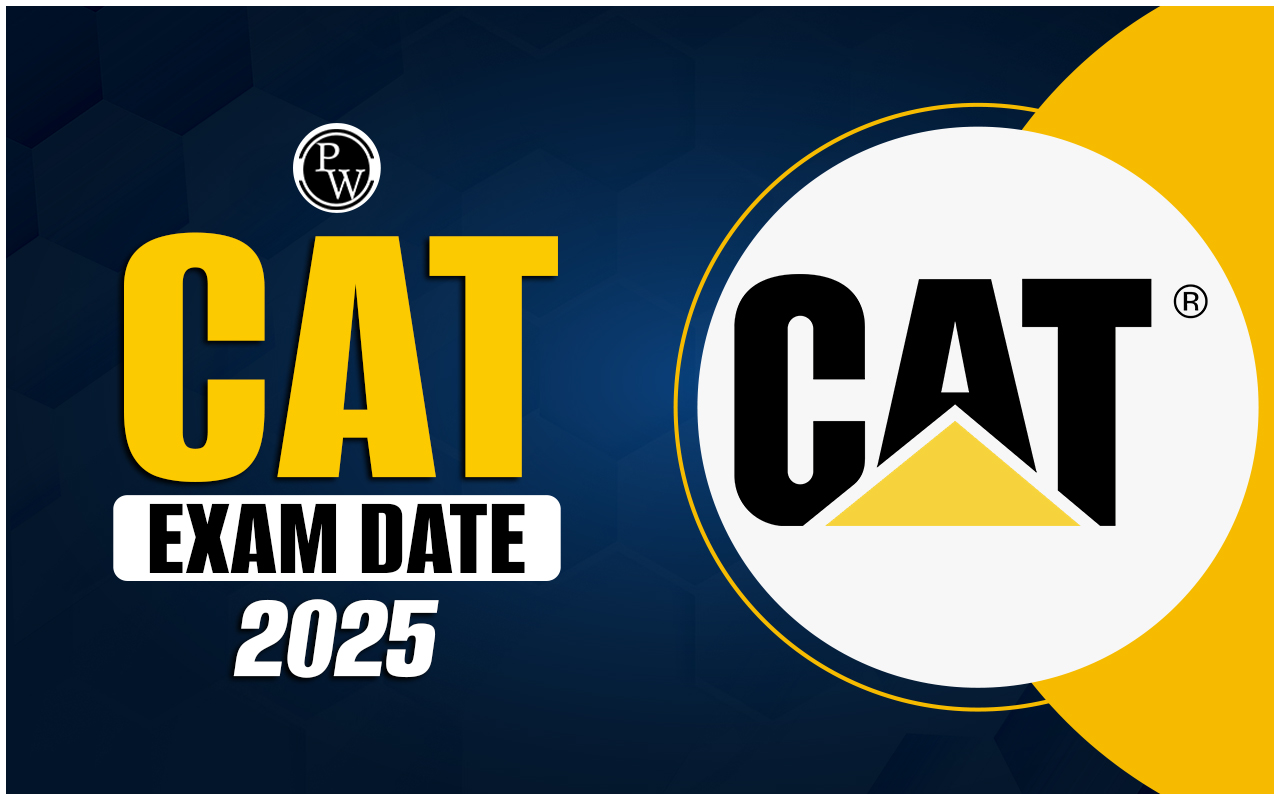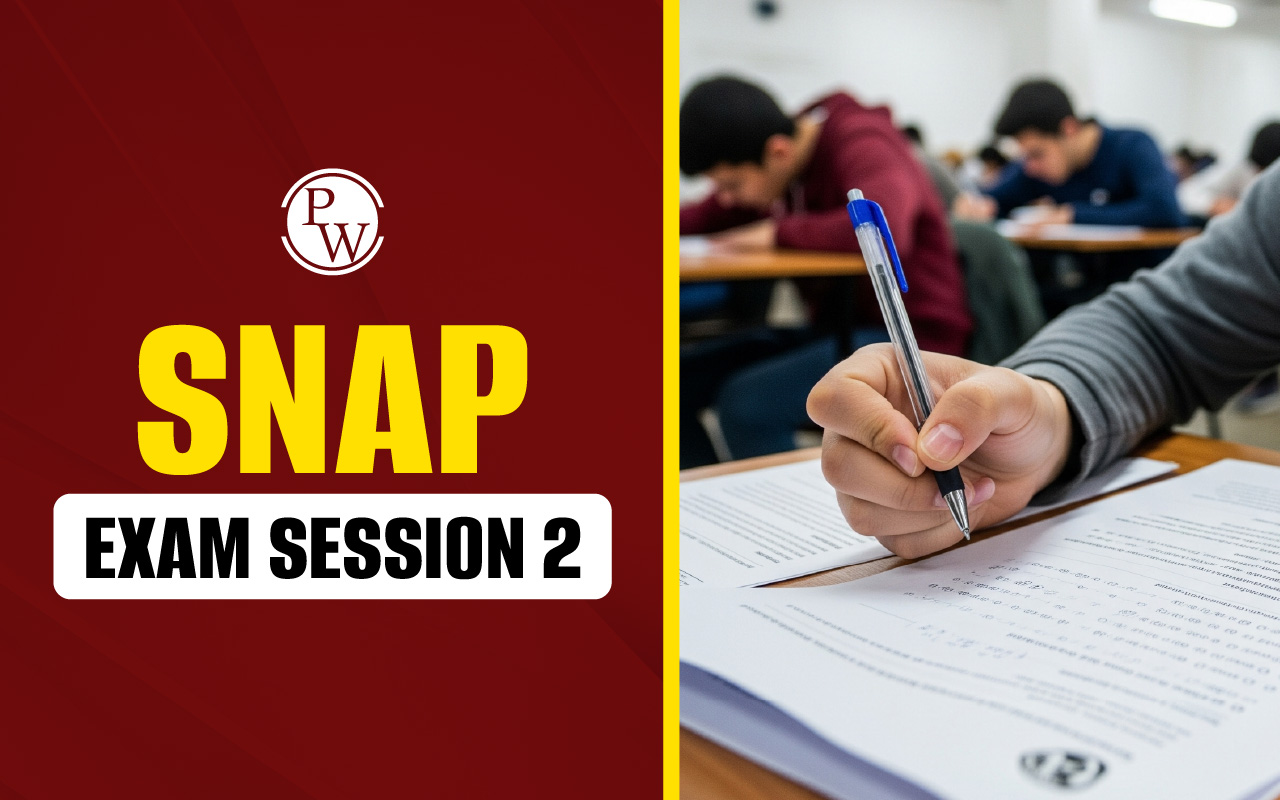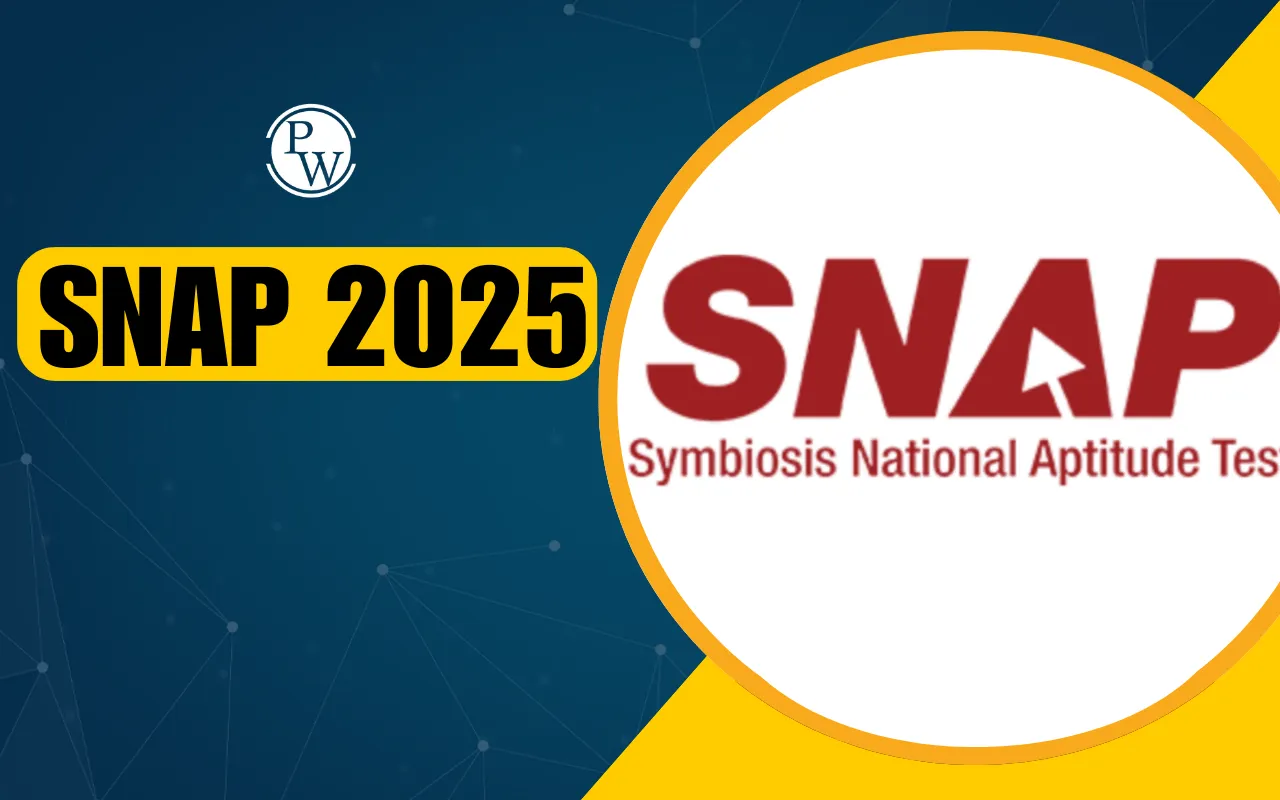
CMAT Exam Syllabus 2026: Understanding the CMAT syllabus 2026 is an important aspect of starting strategic preparation for the exam. Referring to the CMAT exam syllabus, candidates can create an effective study plan, which helps them cover each topic comprehensively. Candidates can access the CMAT syllabus and high-weightage topics by reviewing past years' question trends and the exam pattern. The CMAT syllabus is an essential tool that outlines the important topics, question types, and difficulty levels expected in the exam.
A detailed syllabus allows candidates to focus on key areas, ensuring a comprehensive preparation strategy. Downloading the CMAT 2026 syllabus in PDF format also helps candidates select relevant study materials and practice with sample papers, enhancing their readiness for the entrance test.
CMAT Syllabus 2026
The CMAT 2026 syllabus includes five main sections that test different skills needed for management studies. These are Quantitative Techniques and Data Interpretation, Logical Reasoning, Language Comprehension, General Awareness, and Innovation & Entrepreneurship. Each section has 20 questions, making a total of 100 questions in the exam.
CMAT Exam Syllabus 2026
The exam syllabus focuses on basic math topics like algebra, geometry, and data interpretation in the Quantitative section. The Logical Reasoning part has puzzles and patterns. Language Comprehension tests grammar and reading skills. General Awareness covers current affairs, government schemes, and business knowledge. Innovation & Entrepreneurship assesses your understanding of startup culture and new business ideas. Knowing this syllabus helps you prepare well for the exam.
CMAT Syllabus 2026 Overview
Candidates preparing to appear for the CMAT Exam 2026 are required to know the CMAT 2026 Syllabus and Exam pattern. The table below presents the key highlights of the CMAT syllabus 2026:
|
CMAT Syllabus 2026 Overview |
|
|
Particulars |
Details |
|
CMAT 2026 Exam Mode |
Computer-Based Test (CBT) |
|
CMAT Exam Duration |
180 minutes (3 hours) |
|
Type of Questions |
Multiple Choice Questions (MCQs) |
|
No. of Questions in CMAT |
100 questions |
|
CMAT 2026 Question Paper Language |
English |
|
CMAT Syllabus 2026 for MBA |
|
|
Inclusion of TITA Questions |
No |
CMAT 2026 Syllabus Topics
The CMAT 2026 syllabus aligns closely with other MBA entrance exams, covering similar topics. Candidates need nearly 3-4 months to cover all the topics included in the CMAT syllabus. The following table presents the section-wise topics and number of questions in the CMAT exam:
|
CMAT 2026 Section-Wise Syllabus |
||
|
CMAT Syllabus 2026 |
No. of Questions |
Important Topics |
|
Logical Reasoning |
20 |
Number Series, Analytical Reasoning, Blood Relationship, Linear Arrangements, Matrix Arrangements, etc. |
|
Quantitative Techniques & Data Interpretation |
20 |
Algebra, Alligation & Mixtures, Time-Speed-Distance, Geometry, Quadratic and Linear Equations, Graphs, etc. |
|
Innovation & Entrepreneurship |
20 |
Questions related to innovation, startup business management, and entrepreneurship. |
|
Language Comprehension |
20 |
Reading Comprehension, Sentence Correction, Grammar, Parajumbles, English Usage Errors, etc. |
|
General Awareness |
20 |
Economy, World Affairs, Business, Politics, Culture, Sports, Society |
CMAT Syllabus 2026 for Logical Reasoning
The Logical Reasoning section of the CMAT 2026 Exam primarily focuses on evaluating candidates' logical abilities. To excel in this section, candidates must grasp fundamental concepts of the topics included in the syllabus topics The table below shows the notable topics of the CMAT 2026 Logical Reasoning section:
|
CMAT Logical Reasoning Syllabus 2026 |
|
|
Analytical Reasoning |
Analogy Test |
|
Linear Arrangements |
Blood Relationship Tests |
|
Direction and Distance Test |
Statements and Arguments |
|
Statements Assumptions |
Coding and Decoding |
|
Inferences |
Statements and Conclusion |
|
Ranking Tests |
Non-Verbal Reasoning |
|
Sequencing |
Matrix Arrangements |
|
Symbol Based Problems |
Venn Diagram |
|
Cause and Effects |
Number Series |
CMAT Syllabus 2026 for Quantitative Techniques & Data Interpretation
The Quantitative Techniques & Data Interpretation section in the CMAT 2026 covers topics from Arithmetic and Algebra. The difficulty level of this section is typically moderate. The table below includes the key topics covered in this section of the CMAT syllabus:
|
CMAT Quantitative Techniques & Data Interpretation Syllabus |
|
|
Tabulation |
Mean, Mode, Median |
|
Pipes and Cisterns |
Simple Interest and Compound Interest |
|
Geometry |
Probability |
|
Time-Speed-Distance |
Profit and Loss |
|
Permutations & Combinations |
Percentages |
|
In-equations |
Quadratic and Linear Equations |
|
Line Graph |
Mensuration |
|
Alligation & Mixtures |
Number System |
|
Algebra |
Work and Time |
|
Binomial Theorem |
Pie Chart, Bar Chart |
|
Ratio and Proportion |
|
CMAT Syllabus 2026 for Language Comprehension
The Language Comprehension section of the CMAT includes questions from Verbal Ability and Reading Comprehension topics. Typically, there are 2-3 short reading passages, with questions based on factual information. Additionally, the Verbal Ability segment includes vocabulary and grammar-based questions. Here are the key topics covered in the Language Comprehension section of the CMAT:
|
CMAT Language Comprehension Syllabus |
|
|
Reading Comprehension |
English Usage Errors |
|
English Grammar |
Paragraph Completion |
|
Synonyms |
Antonyms |
|
Verbal Ability |
Jumbled Para |
|
Sentence Correction |
One-Word Substitution |
|
Idioms |
Phrases |
CMAT Syllabus 2026 for General Awareness
The General Awareness section of the CMAT 2026 covers both current affairs and static general knowledge. Candidates should focus on detailed memorization of events, as questions can include any aspect of the given topics:
|
CMAT General Awareness Syllabus |
|
|
Literature |
Trade Awareness |
|
Indian Constitution |
Politics |
|
Geography |
Current Affairs (National and International Economy) |
|
Culture |
Personalities in News |
|
Economics |
Sports News |
|
History |
Science in Everyday Life |
CMAT Syllabus 2026 for Innovation and Entrepreneurship
The Innovation and Entrepreneurship section of the CMAT focuses on evaluating candidates' entrepreneurial skills. The topics covered in this section are mentioned below:
|
CMAT Innovation and Entrepreneurship Syllabus |
|
|
Concepts of Entrepreneurship |
Theories and Models of Entrepreneurship |
|
Framework of Entrepreneurship Theories |
Models of Entrepreneurship |
|
Overview of Entrepreneurship |
Emerging Trends in Social Entrepreneurship |
|
Principles of Business Organisation |
Entrepreneurial Society |
|
Evolution of Entrepreneurship in India |
Dimensions of Entrepreneurship |
|
Entrepreneurial Culture |
Motivation, Communication, and Leadership |
|
Role of Entrepreneurship in Economic Development |
Emerging Models of Corporate Entrepreneurship |
|
Women Entrepreneurship |
Rural Entrepreneurship |
Achieve your MBA target by clearing CMAT with a commendable score. Join PW MBA Online Coaching to start strategic CMAT preparation under the guidance of India's best faculty. Get regular live classes, doubt clarification sessions, weekly evaluations, and full-length mock tests with performance analysis at the PW MBA Coaching Class.

